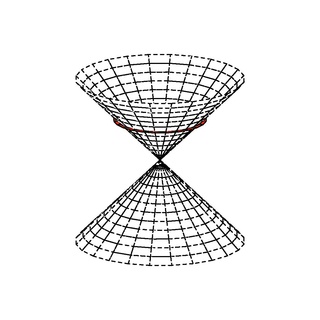 W
WIn mathematics, the Arf invariant of a nonsingular quadratic form over a field of characteristic 2 was defined by Turkish mathematician Cahit Arf (1941) when he started the systematic study of quadratic forms over arbitrary fields of characteristic 2. The Arf invariant is the substitute, in characteristic 2, for the discriminant for quadratic forms in characteristic not 2. Arf used his invariant, among others, in his endeavor to classify quadratic forms in characteristic 2.
 W
WIn mathematics, in number theory, a Bhargava cube is a configuration consisting of eight integers placed at the eight corners of a cube. This configuration was extensively used by Manjul Bhargava, a Canadian-American Fields Medal winning mathematician, to study the composition laws of binary quadratic forms and other such forms. To each pair of opposite faces of a Bhargava cube one can associate an integer binary quadratic form thus getting three binary quadratic forms corresponding to the three pairs of opposite faces of the Bhargava cube. These three quadratic forms all have the same discriminant and Manjul Bhargava proved that their composition in the sense of Gauss is the identity element in the associated group of equivalence classes of primitive binary quadratic forms. Using this property as the starting point for a theory of composition of binary quadratic forms Manjul Bhargava went on to define fourteen different composition laws using a cube.
 W
WIn mathematics, a Clifford algebra is an algebra generated by a vector space with a quadratic form, and is a unital associative algebra. As K-algebras, they generalize the real numbers, complex numbers, quaternions and several other hypercomplex number systems. The theory of Clifford algebras is intimately connected with the theory of quadratic forms and orthogonal transformations. Clifford algebras have important applications in a variety of fields including geometry, theoretical physics and digital image processing. They are named after the English mathematician William Kingdon Clifford.
 W
WThe Hasse–Minkowski theorem is a fundamental result in number theory which states that two quadratic forms over a number field are equivalent if and only if they are equivalent locally at all places, i.e. equivalent over every completion of the field. A related result is that a quadratic space over a number field is isotropic if and only if it is isotropic locally everywhere, or equivalently, that a quadratic form over a number field nontrivially represents zero if and only if this holds for all completions of the field. The theorem was proved in the case of the field of rational numbers by Hermann Minkowski and generalized to number fields by Helmut Hasse. The same statement holds even more generally for all global fields.
 W
WIn mathematics, given a vector space X with an associated quadratic form q, written (X, q), a null vector or isotropic vector is a non-zero element x of X for which q(x) = 0.
 W
WIn mathematics, the orthogonal group in dimension n, denoted O(n), is the group of distance-preserving transformations of a Euclidean space of dimension n that preserve a fixed point, where the group operation is given by composing transformations. The orthogonal group is sometimes called the general orthogonal group, by analogy with the general linear group. Equivalently, it is the group of n×n orthogonal matrices, where the group operation is given by matrix multiplication; an orthogonal matrix is a real matrix whose inverse equals its transpose. The orthogonal group is an algebraic group and a Lie group. It is compact.
 W
WIn geometry, a point reflection or inversion in a point is a type of isometry of Euclidean space. An object that is invariant under a point reflection is said to possess point symmetry; if it is invariant under point reflection through its center, it is said to possess central symmetry or to be centrally symmetric.